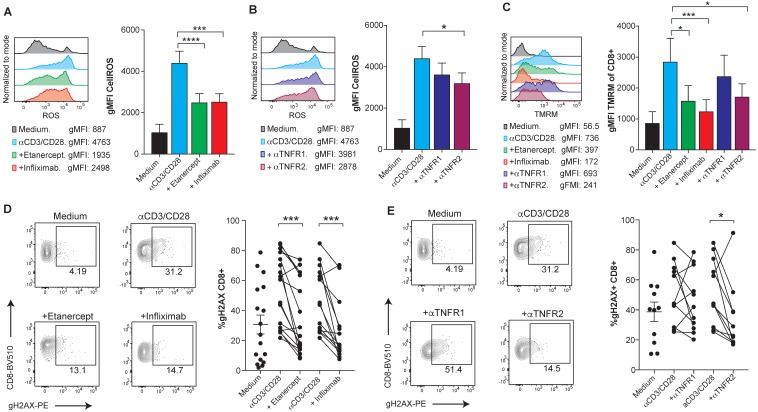Figure 2.
TNFR2 stimulation on human CD8 T cells increases ROS production via mitochondrial hyperpolarization and causes DNA damage. PBMCs from healthy donors were activated with plate-bound anti-CD3 and soluble anti-CD28 mAbs for seven days in the presence or absence of blocking TNF agents. Flow cytometry assessment of intracellular ROS geometric mean fluorescence in FACs-gated CD8 T cells stimulated in the presence or absence of etanercept or infliximab (A), or selective blocking antibodies against TNFR1 or TNFR2 (B) (n=8). C, Flow cytometry measurement of TMRM geometric mean fluorescence of FACs-gated CD8 T cells that were stimulated in the presence or absence of TNF blocking agents (n=8). DNA damage was measured by intracellular staining of phosphorylated gH2AX on FACs gated CD8 T cells in the presence or absence of etanercept (n=17) or infliximab (n=14) (D), or selective blocking antibodies against TNFR1 or TNFR2 (E) (n=12). CD8 T cells were pre-gated on Live+/CD3+/CD4-. Data for A-C are mean ± s.e.m. and P values were calculated using one-way ANOVA with Tukey's multiple comparsisions test. In D and E, the samples were compared by a paired two-tailed t-test.

